Progetto a cura di: Cristina Turconi – Executive & Business Coach ICF | Formatrice Aziendale | Facilitatrice Lavoro di Gruppo | Master Practitioner in HPM™ Human Potential Modeling | Consulente e Innovation Manager MISE
E’ importante offrire un’attenzione speciale alle emozioni quando comunichiamo.
Le emozioni fanno parte del nostro mondo interiore e ne sono l’elemento centrale. Un’emozione è una dinamica energetica che corre su e giù nel corpo penetrando ogni esperienza, e determinando il nostro modo di pensare.
Non esiste un’emozione giusta o sbagliata. Persino quando l’emozione sembra esagerata, si tratta solitamente di giudizi provenienti dall’esterno.
Dall’interno la persona sente l’emozione e deve viverla anche se soltanto per un momento.[1]
Spesso tendiamo a interiorizzare le nostre emozioni per paura del giudizio esteriore che si insinua sotto la nostra pelle e ci fa vergognare di ciò che stiamo provando.
Le emozioni rimangono così imbrigliate e contratte (evitiamo di riconoscerle, accettarle, nominarle e descriverle nella nostra comunicazione con l’altro).
Una semplice domanda come: “Puoi descrivere come ti senti?” fa sentire l’altro accompagnato da chi ascolta, aprendo la porta all’elaborazione dell’emozione stessa.

In che modo emozioni e comunicazione sono correlate?
Articolo estratto dal testo “Ascolto attivo ed empatia – I segreti di una comunicazione efficace” Copyright FrancoAngeli e dott. Daniele Trevisani.
Quando comunichiamo, oltre ai dati verbali (oggetti, soggetti, verbi, aggettivi e altri elementi del discorso) possiamo sempre notare un sottofondo emotivo (la parte esterna della ruota di Plutchik sotto presentata). A volte questo sottofondo si fa più intenso, e quasi arriviamo a “sentire” o “percepire” più lo sfondo emotivo delle stesse parole (area delle emozioni intermedie). Quando si entra nelle emozioni estreme, quelle intense, rappresentate al centro, le parole diventano quasi inutili, perché veniamo inondati dall’emozione che ci arriva dall’altro, e questa finisce per sopraffare qualsiasi contenuto.
Il “solido di Plutchik” o “Ruota delle Emozioni di Plutchik”[2] rappresenta una delle migliori visualizzazioni su come funzionano le emozioni. Dobbiamo tenere a mente che anche noi siamo soggetti comunicatori, per cui quanto sopra evidenziato, vale anche per quando siamo noi a parlare.
Figura 1 – Ruota degli stati emotivi (Plutchik)[3]
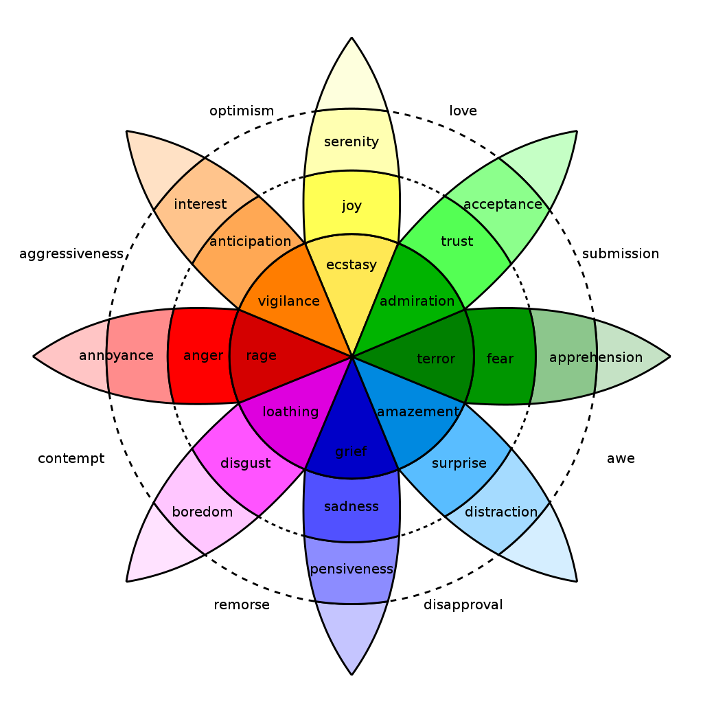
Inevitabilmente, in uno scambio comunicativo, abbiamo sempre un sottostante scambio di emozioni.
Alcune persone sono bravissime e rapidissime nel cogliere le proprie emozioni interne, dirigerle, dominarle, farne l’uso che vogliono. Ad esempio, parlare in pubblico davanti a migliaia di persone senza provare il minimo di ansia.
Altre persone invece sono vittime delle emozioni, possono diventare vittime di un amore cieco e sordo ad ogni diniego, e perseverare nell’amare una persona che non le ama, o non ha nemmeno mai dato segni di amore. Possono provare paura persino del pensiero di parlare in pubblico, e temerlo come il peggiore dei veleni.
Ogni situazione comunicativa (COMSIT) può avere specifici significati e sottofondi emotivi. Le COMSIT sono specifici frames o momenti comunicativi che possono essere distinti gli uni dagli altri, come il dialogo tra amici, o il litigio, o il dare spiegazioni stradali, e mille altre possibilità date dalla vita di relazione. In ciascuna COMSIT, si presentano gradi diversi di incomunicabilità e diversi tipi di emozioni.[4]
Ma allora cosa fare. La strada, l’unica vera strada, è “allenarsi alle emozioni”. E detta così sembra come “allenarsi a vivere”, qualcosa di intangibile. Ed è proprio quell’allenare l’intangibile che fa dell’”allenamento alle emozioni” un esercizio di grande intelligenza emotiva. E una raffinata palestra di Coaching Esperienziale, per chi progetta esercizi di formazione attiva sulle emozioni.
Si tratta di fronteggiare le emozioni in un “laboratorio emotivo” dove queste possano essere sperimentate e poi “sbobinate” con il supporto di un formatore, coach, Counselor o psicologo, in funzione del tipo di intervento.
Quando si lavora su gruppi aziendali e non su situazioni di patologia clinica, certamente la figura del formatore e del Counselor possono essere il riferimento. Questi “laboratori sulle emozioni” devono essere formulati ingegneristicamente, possono utilizzare video, immagini, lettere, dialoghi a tema, ed ogni tipo di esercizio che coinvolga le emozioni.
Come ci dice Howell[5] parlando delle nostre “incompetenze emotive inconsapevoli”, all’inizio troveremo il tutto un pò stupido o saremo “imbranati”, ma poi “scaleremo” questa vetta, passo dopo passo, sino a giungere ad una forte competenza emotiva.
E del resto, questa è necessaria tanto più è elevata la posizione di carriera. Si pensi alle necessità di equilibrio emotivo di un Giudice, o di un Chirurgo, o di un operatore delle Forze dell’Ordine, o in situazioni specifiche come tirare un rigore, o in sport difficili ed estremi dove le emozioni sono tutto, o quasi tutto.
Le emozioni sono spesso miste, un incrocio tra diversi stati emotivi, come vediamo in questa figura, dove vengono mostrati i collegamenti primari, secondari e terziari tra le diadi di emozioni nel modello di Plutchik.
Figura 2 – Grafico che mostra le diadi primarie, secondarie e terziarie sulla ruota delle emozioni di Plutchik[6]
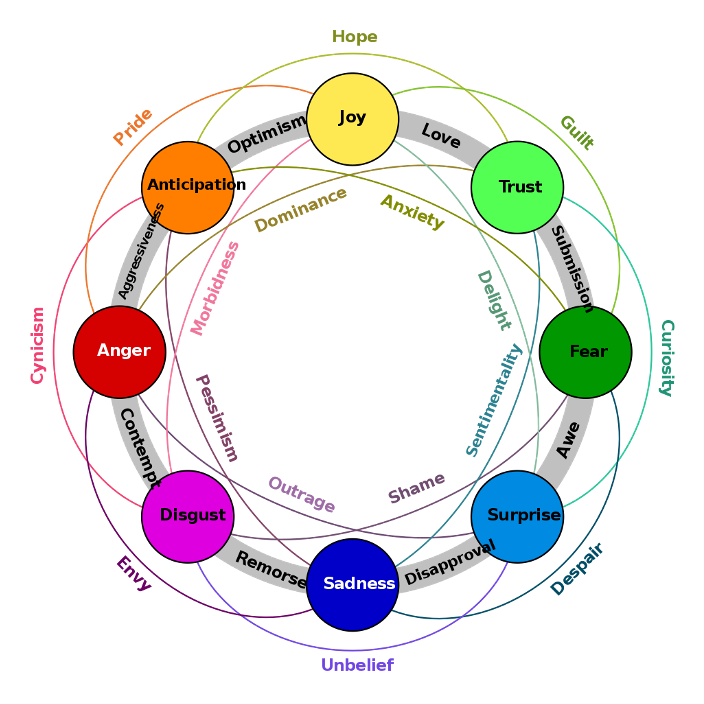
I collegamenti tra stati emotivi producono emozioni variabili a cui partecipano più stati emotivi (Mixed Emotions), che sono in realtà la nostra verità emotiva di tutti i giorni.
[1] Jerome Liss (2004), L’ascolto profondo, edizioni la meridiana – partenze
[2] Plutchik , Robert (1980), Emotion: Theory, research, and experience: Vol. 1. Theories of emotion, 1, New York: Academic
Plutchik Robert (2002), Emotions and Life: Perspectives from Psychology, Biology, and Evolution, Washington, DC: American Psychological Association
Plutchik Robert; R. Conte., Hope (1997), Circumplex Models of Personality and Emotions, Washington, DC: American Psychological Association
[3] Fonte: https://en.wikipedia.org/wiki/Emotion#/media/File:Plutchik-wheel.svg By Machine Elf 1735 – Own work, Public Domain, ttps://commons.wikimedia.org/w/index.php?curid=13285286
[4] Trevisani, Daniele (1992). A Semiotic Models Approach to the Analysis of International/Intercultural Communication; published in “Proceedings of the International and Intercultural Communication Conference”, University of Miami, FL., USA, 19 – 21 May 1992
[5] Howell, William S. (1982). The empathic communicator. University of Minnesota: Wadsworth Publishing Company
[6] Fonte: Wikimedia Commons https://commons.wikimedia.org/wiki/File:Plutchik_Dyads.svg
Per approfondimenti vedi:
- Libro: “Ascolto attivo ed empatia – I segreti di una comunicazione efficace”
- Sito Dr. Daniele Trevisani
- Sito Studio TrevisaniAcademy Formazione Aziendale, Coaching e Mentoring
- Dr. Daniele Trevisani – Website in English
- Il sito della Comunicazione Aziendale – Comunicazioneaziendale.it
- Medialab Research
- Dr. Daniele Trevisani Linkedin
Cristina Turconi
Executive & Business Coach ICF | Formatrice Aziendale | Facilitatrice Lavoro di Gruppo | Master Practitioner in HPM™ Human Potential Modeling | Consulente e Innovation Manager MISE
Sito Cristina Turconi – Sviluppo del Potenziale Individuale, dei Team e delle Imprese
Cristina Turconi – Blog WordPress
Cristina Turconi – Linkedin
Cristina Turconi – Facebook
Empatia e Ascolto. Parole chiave dell’articolo
- aforismi sull empatia
- ascolto attivo empatia
- carl rogers empatia
- che cos è l empatia
- che cosa significa empatia
- che significa empatia
- che vuol dire empatia
- Come si fa a capire se una persona è empatica?
- Come si manifesta l empatia?
- competenza su empatia e intelligenza emotiva
- competenze su empatia e intelligenza emotiva pdf
- contrario di empatia
- cos è l empatia
- cosa significa empatia
- Cosa significa provare empatia?
- Cosa vuol dire comunicazione empatica?
- cosa vuol dire empatia
- cosa vuol dire empatia significato
- Cosa vuol dire essere empatici?
- Cos’è l empatia cognitiva?
- creare empatia
- definizione di empatia
- definizione empatia
- empatia
- empatia aforismi
- empatia al contrario
- empatia arte
- empatia artemide
- empatia cognitiva
- empatia contrario
- empatia contrario
- empatia definizione
- empatia definizione
- empatia dizionario
- empatia e intelligenza emotiva
- empatia e narcisismo
- empatia e neuroni specchio
- empatia e simpatia
- empatia esempi
- empatia etimologia
- empatia etimologia
- empatia facebook
- empatia frasi
- empatia frasi
- empatia frasi e immagini
- empatia genova
- empatia immagini
- empatia immagini buongiorno
- empatia in inglese
- empatia inglese
- empatia nell’arte
- empatia psicologia
- empatia significa
- empatia significato
- empatia significato dizionario
- empatia significato psicologico
- empatia sinonimi
- empatia sinonimi e contrari
- empatia sinonimo
- empatia sinonimo
- empatia sinonimos
- empatia tesi
- empatia tra due persone
- empatia treccani
- empatia wikipedia
- entrare in empatia
- esempi di empatia
- esempio di empatia
- esercizi per sviluppare empatia bambini
- etimologia empatia
- frase empatia
- frasi empatia
- frasi su empatia
- frasi sull empatia
- frasi sull’empatia
- insegnare l’empatia a scuola
- l empatia
- l’empatia
- libri sull’empatia
- link empatia
- link sull empatia
- mancanza di empatia
- mappa dell’empatia
- neuroni a specchio empatia
- neuroni empatia
- neuroni specchio ed empatia
- neuroni specchio empatia
- neuroni specchio empatia
- persona empatica
- rogers empatia
- significato della parola empatia
- significato di empatia
- significato di empatia in italiano
- significato di empatia tra due persone
- significato empatia
- significato empatia vocabolario
- significato parola empatia
- sinonimi di empatia
- sinonimi empatia
- sinonimo di empatia
- sinonimo empatia
- tema svolto sull’empatia
- tesina empatia
- test empatia
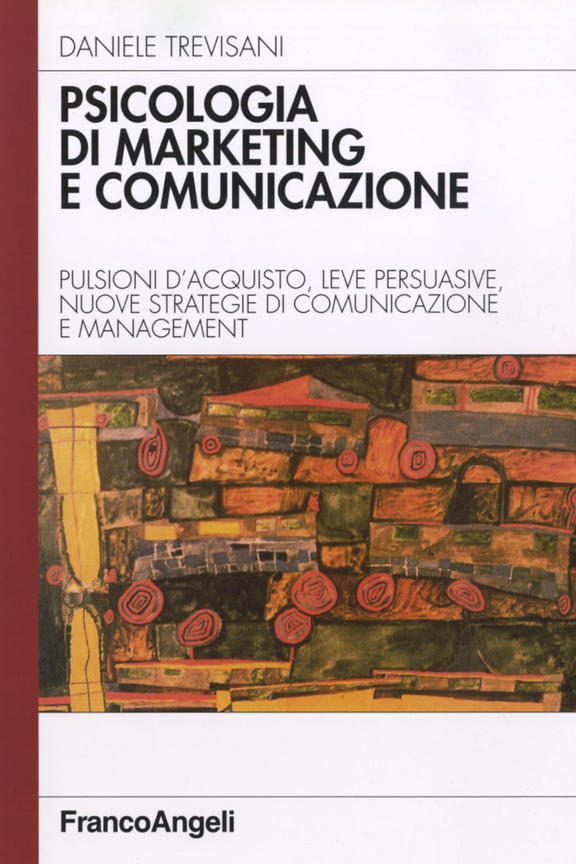
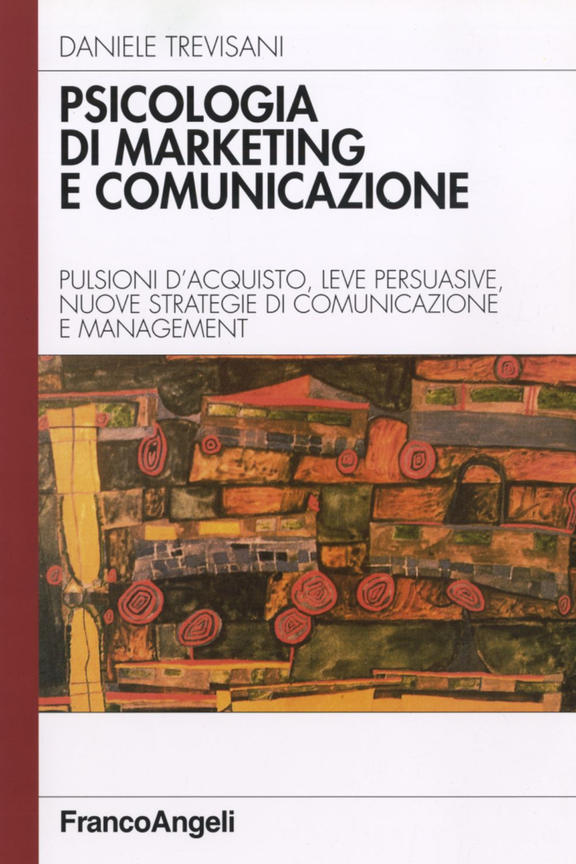
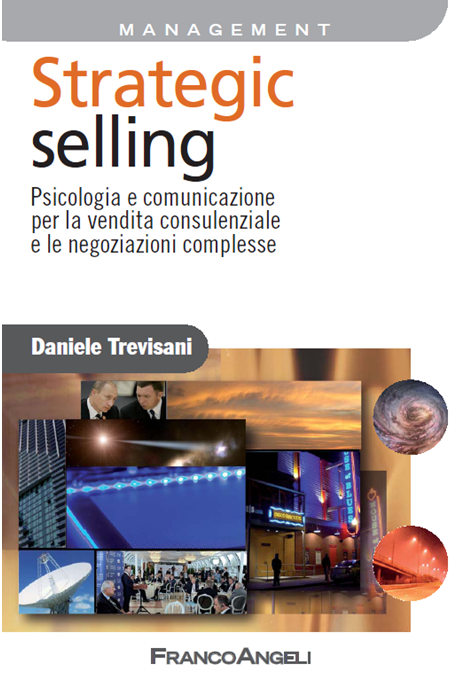


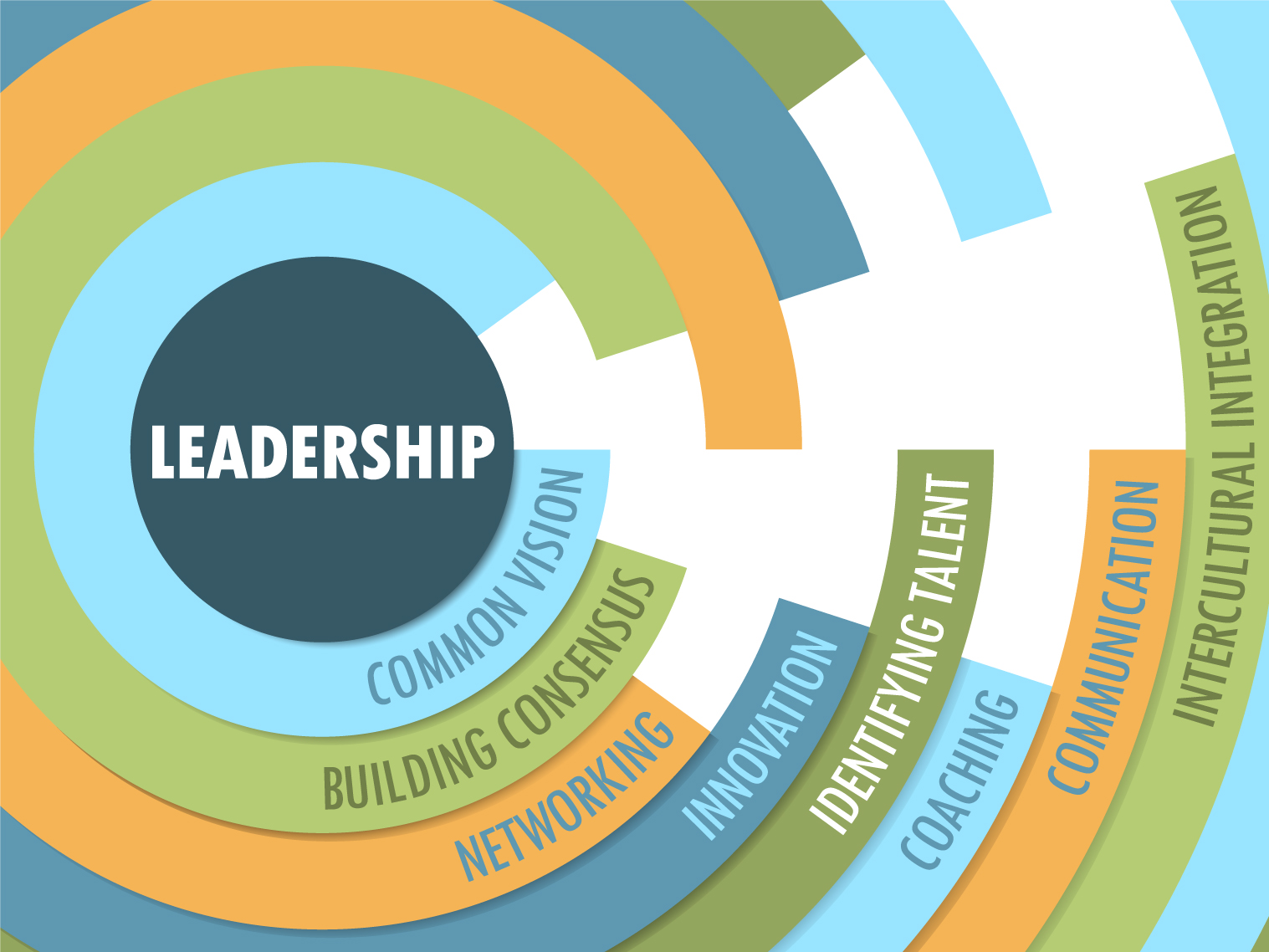
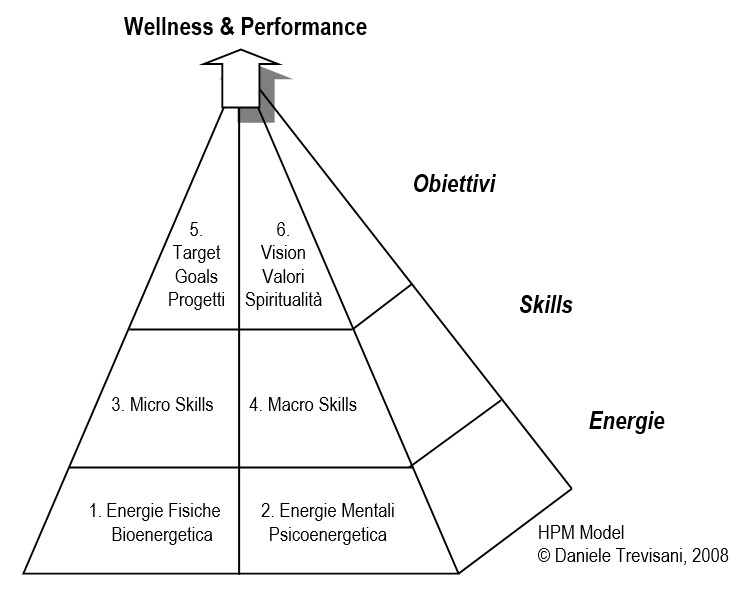 Personal Trainer Metodo HPM™ – le basi concettuali del metodo
Personal Trainer Metodo HPM™ – le basi concettuali del metodo
